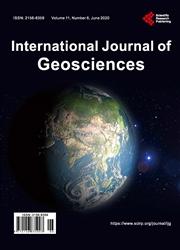Petrography, Geochemistry and Relative Chronology of Quaternary Volcanic Formations in the Mermoz and Fann Sectors, West Senegal
引用次数: 0
Abstract
Detailed work on Quaternary volcanism has been carried out in the Mermoz and Fann sectors of western Senegal. In the Mermoz sector, the main emission zone is a collapsed crater located at the intersection of three major fractures: NE-SW, NW-SE and N-S. The lithological succession in this Mermoz sector comprises, from bottom to top: 1) a substratum with at its base Eocene limestones on which lie Quaternary sands surmounted by stratified tuffs; 2) a vesicular ball dolerite which deforms the stratified tuffs; 3) a dark early brec-cia; 4) two generations of basanites: the first is vesicular, the second non-vesicular; 5) a clear intermediate breccia and finally 6) a late breccia. The Fann sector contains several emission zones, most of which are currently located in the ocean. The lavas may have reached the coast through E-W and NE-SW faults. The lithological succession includes from bottom to top: 1) scoria-rich early volcanic breccias; 2) a first generation of non-vesicular me-socrate dolerite (D1); 3) a second generation of melanocrate vesicular dolerite (D2); 4) basanites and finally 5) a late breccia. The geochemical characteristics of the lavas studied are compatible with a very enriched and very deep magmatic source of the garnet lherzolite type located in the lower mantle. The magma from this source would have risen in the form of mantle plumes through major NE-SW and E-W faults in a continental intraplate context.塞内加尔西部Mermoz和Fann地区第四纪火山岩地层的岩石学、地球化学和相对年代学
在塞内加尔西部的Mermoz和Fann地区进行了第四纪火山作用的详细工作。在Mermoz地区,主要的喷发区是位于NE-SW, NW-SE和N-S三个主要裂缝交叉处的塌陷陨石坑。默莫兹段的岩性序列由下至上依次为:1)基底为始新世灰岩,基底上为层状凝灰岩覆盖的第四纪砂岩;2)使层状凝灰岩变形的泡状球白云岩;3)深色早角砾岩;4)两代玄武岩:第一代为泡状,第二代为非泡状;5)清晰的中角砾岩;6)晚期角砾岩。范恩区包含几个排放区,其中大部分目前位于海洋中。熔岩可能通过东西向和东北-西南向断层到达海岸。岩性从下到上依次为:1)富碎屑岩的早期火山角砾岩;2)第一代非水泡状橄榄岩(D1);3)第二代黑素酸泡状白云岩(D2);4)玄武岩,最后5)晚角砾岩。研究的熔岩地球化学特征与位于下地幔的石榴石—辉橄榄岩型岩浆源非常富集、非常深相容。这一岩浆源在大陆板内背景下以地幔柱的形式通过NE-SW和E-W断裂上升。
本文章由计算机程序翻译,如有差异,请以英文原文为准。
求助全文
约1分钟内获得全文
求助全文

 求助内容:
求助内容: 应助结果提醒方式:
应助结果提醒方式:


